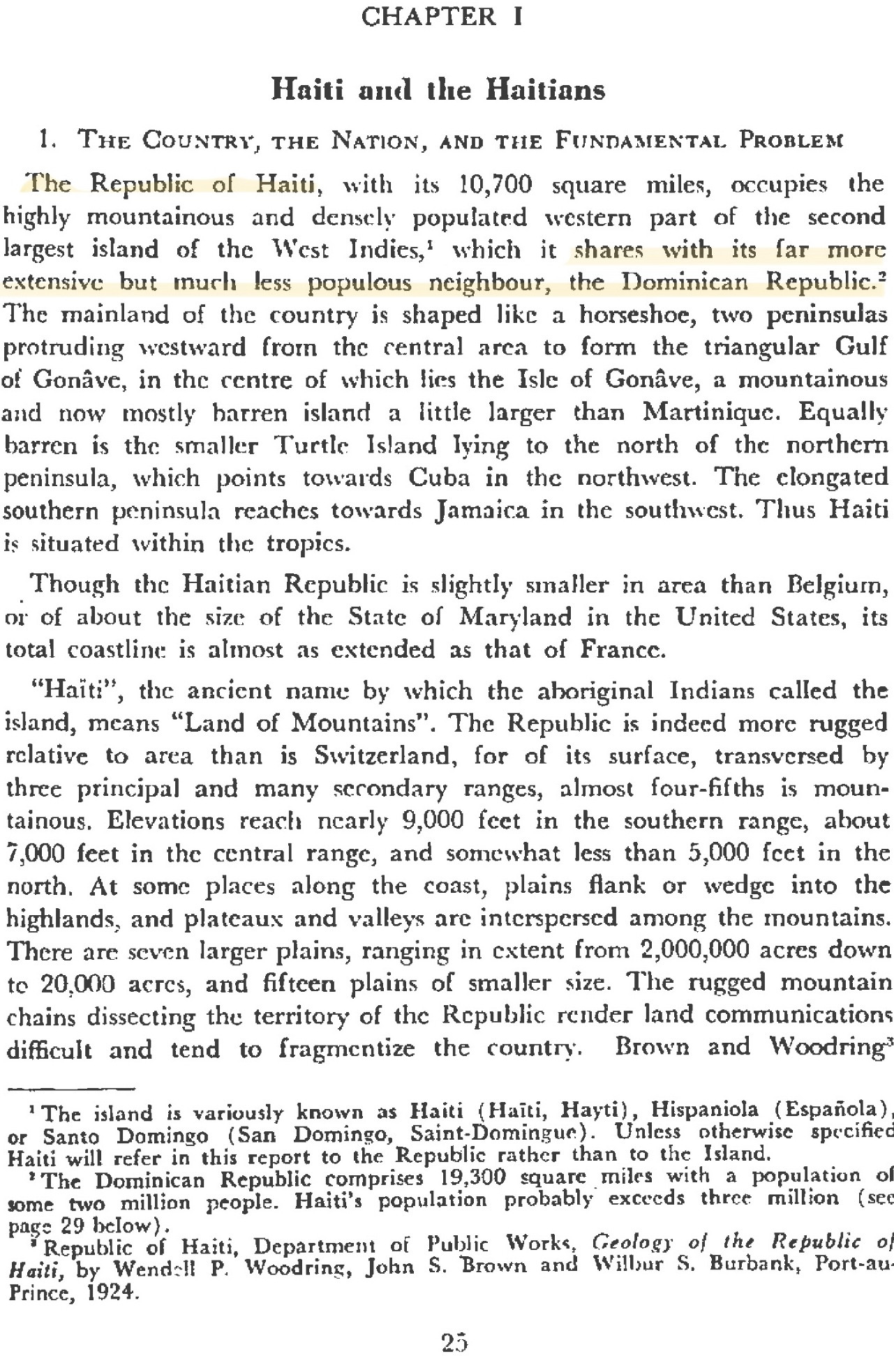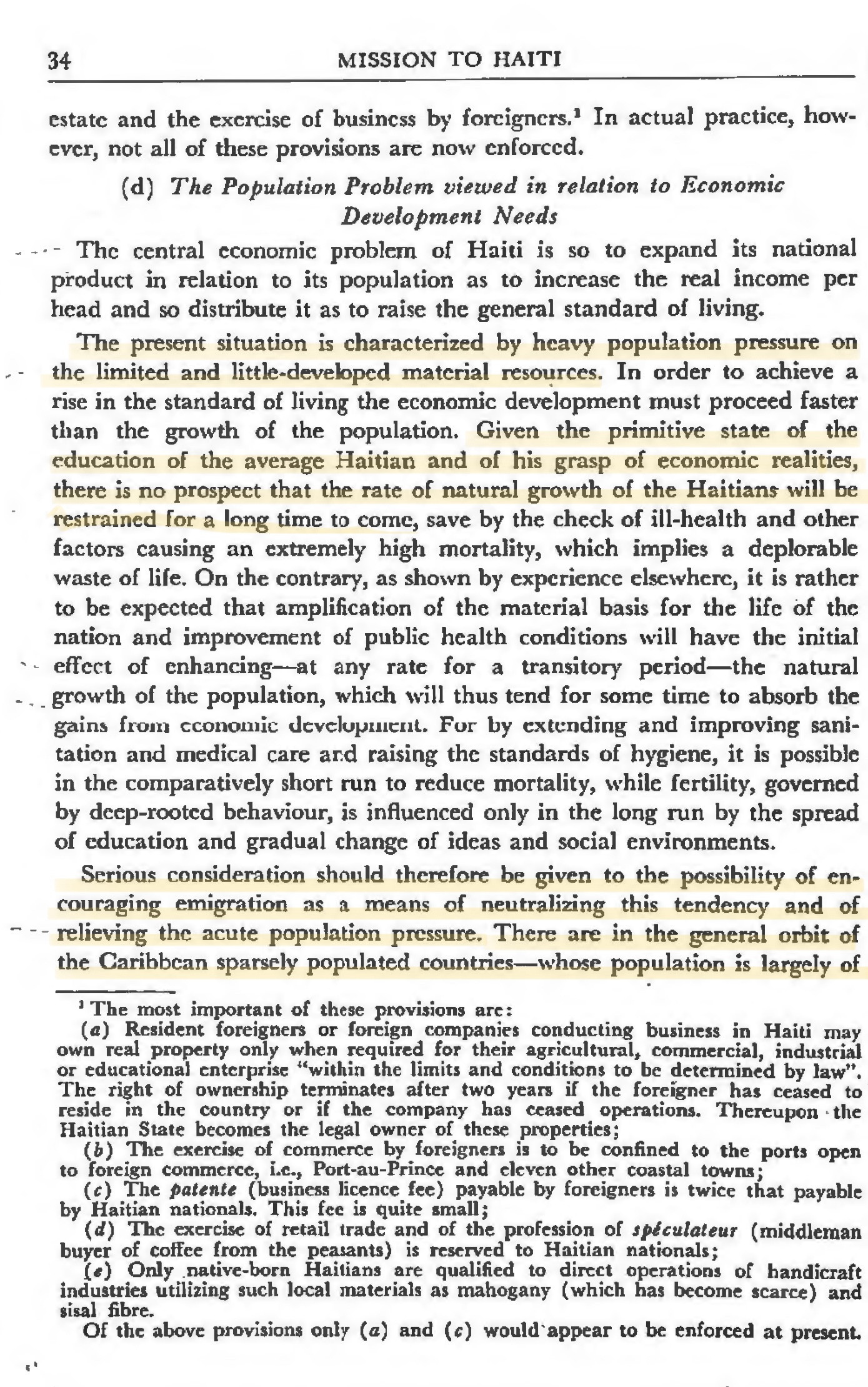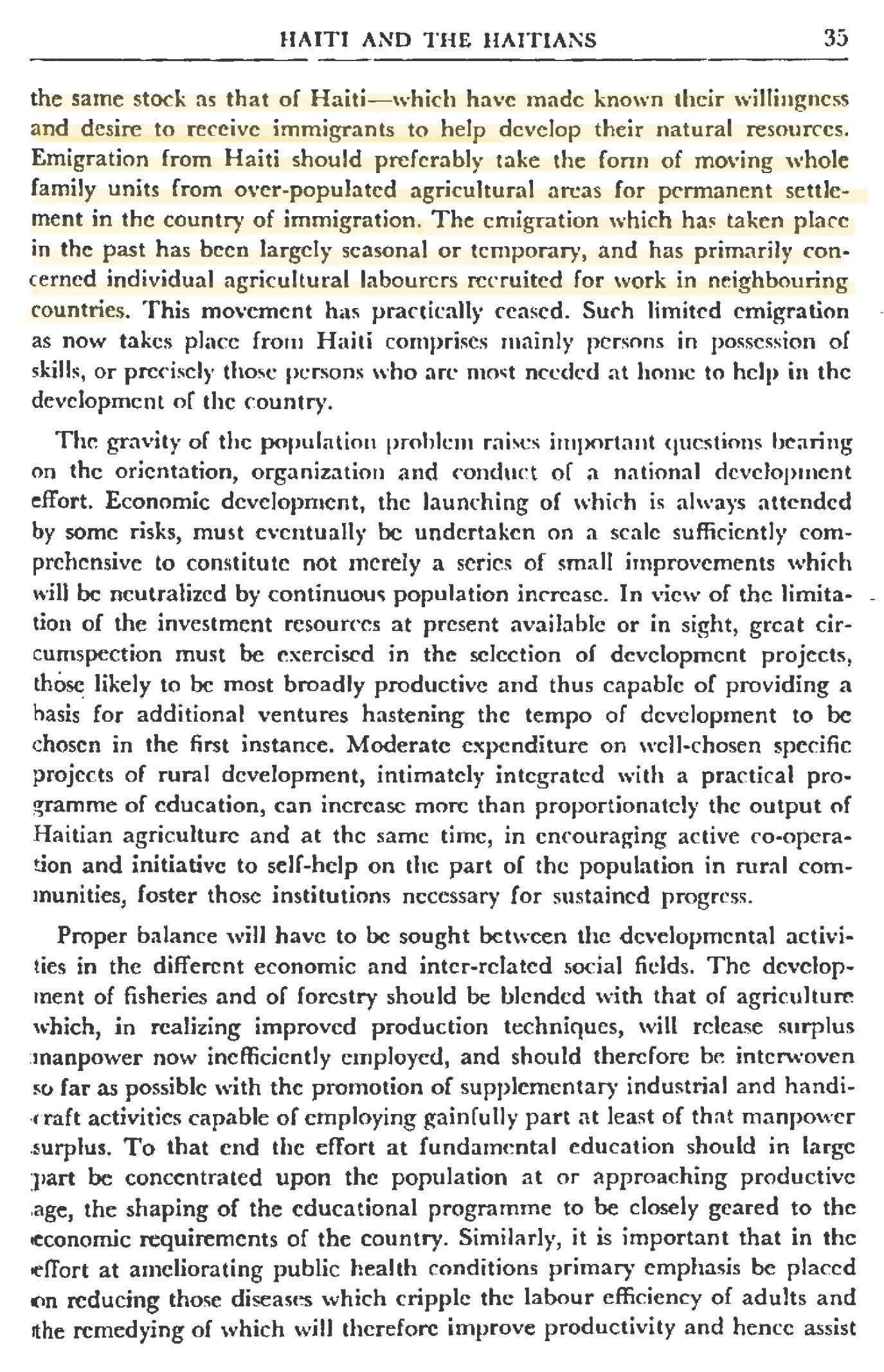The UN has free e-books in English and French versions of "Mission to Haiti: report of the United Nations Mission of Technical Assistance to the Republic of Haiti." That book was published in 1949 by the United Nations (the UN was created in the 1940's) about a mission they made to Haiti to study the demographic problem. Mainly, Haiti was already overpopulated and population growth was not going to halt or decrease any time soon. Some of the recommendations they gave to the Haitian government are shown below (notice the highlights.)
Very interesting that a book about the overpopulation lf Haiti and where one of the suggestions was for the Haitian government to encourage the mass emigration of entire Haitian families to a less populated and less population dense country where they would settle permanently, the DR is simply mentioned as "a neighbor of Haiti" but as "far more extensive and less populated neighbor."


Here it mentions the emigration of temporary workers to neighboring countries, this was mostly sugar cane workers that were employed in the sugar plantations in Cuba and the Dominican Republic. Around the middle of the 20th century Cuba stop using Haitian labor and, in fact, most of the Haitians were deported back to Haiti as they were temporary workers. In the DR while Trujillo was in power temporary workers were sent back when their contracts expired, but after Trujillo sugar plantation owners would employ the "temporary workers" from Haiti but didn't always sent them back to Haiti. With time this has created what were initially Haitian bateyes into towns as the population multiplied (such as Consuelo in San Pedro de Macorís), something that didn't happen with any of the bateyes in Cuba when they existed there. The usage of Haitian laborers has also expanded in the DR and now can be found in the construction industry, in most of agricultural industry and even in informal sectors such as motoconcho, guachimanes, street vendors, etc. These things didn't happen in Cuba or in Trujillo-ruled DR because temporary workers were actually temporary and there wasn't much leeway for illegal immigrants. Cuba continued like that while the DR after Trujillo there was a relaxing of returning the temporary workers and preventing/deporting illegal immigrants.

Keep in mind that in the Caribbean everywhere is populated except Cuba and the Dominican Republic, which are the least dense of most of the islands.
The full books: https://digitallibrary.un.org/record/4012986
That's one of the books often cited by conservative groups to show that the UN did suggested to Haiti the mass emigration of entire Haitian families to countries less populated and less dense than Haiti itself. As said before, in the Caribbean only Cuba and the Dominican Republic had considerably less population for its territory and a much lower population density.
It should also be kept in mind that this was in 1949, today things are much worse.
Very interesting that a book about the overpopulation lf Haiti and where one of the suggestions was for the Haitian government to encourage the mass emigration of entire Haitian families to a less populated and less population dense country where they would settle permanently, the DR is simply mentioned as "a neighbor of Haiti" but as "far more extensive and less populated neighbor."


Here it mentions the emigration of temporary workers to neighboring countries, this was mostly sugar cane workers that were employed in the sugar plantations in Cuba and the Dominican Republic. Around the middle of the 20th century Cuba stop using Haitian labor and, in fact, most of the Haitians were deported back to Haiti as they were temporary workers. In the DR while Trujillo was in power temporary workers were sent back when their contracts expired, but after Trujillo sugar plantation owners would employ the "temporary workers" from Haiti but didn't always sent them back to Haiti. With time this has created what were initially Haitian bateyes into towns as the population multiplied (such as Consuelo in San Pedro de Macorís), something that didn't happen with any of the bateyes in Cuba when they existed there. The usage of Haitian laborers has also expanded in the DR and now can be found in the construction industry, in most of agricultural industry and even in informal sectors such as motoconcho, guachimanes, street vendors, etc. These things didn't happen in Cuba or in Trujillo-ruled DR because temporary workers were actually temporary and there wasn't much leeway for illegal immigrants. Cuba continued like that while the DR after Trujillo there was a relaxing of returning the temporary workers and preventing/deporting illegal immigrants.

Keep in mind that in the Caribbean everywhere is populated except Cuba and the Dominican Republic, which are the least dense of most of the islands.
The full books: https://digitallibrary.un.org/record/4012986
That's one of the books often cited by conservative groups to show that the UN did suggested to Haiti the mass emigration of entire Haitian families to countries less populated and less dense than Haiti itself. As said before, in the Caribbean only Cuba and the Dominican Republic had considerably less population for its territory and a much lower population density.
It should also be kept in mind that this was in 1949, today things are much worse.

